Ground level ozone (O3) also tropospheric ozone, is a trace gas of the troposphere, with an average concentration of 20–30 parts per billion by volume (ppbv), with close to 100 ppbv in polluted areas.[1][2] Ozone is also an important constituent of the stratosphere, where the ozone layer exists which is located between 10 and 50 kilometers above the Earth's surface.[3] The troposphere is the lowest layer of the Earth's atmosphere. It extends from the ground up to a variable height of approximately 14 kilometers above sea level. Ozone is least concentrated in the ground layer (or planetary boundary layer) of the troposphere. Ground level or tropospheric ozone is created by chemical reactions between oxides of nitrogen (NOx gases) and volatile organic compounds (VOCs). The combination of these chemicals in the presence of sunlight form ozone. Its concentration increases as height above sea level increases, with a maximum concentration at the tropopause.[4]About 90% of total ozone in the atmosphere is in the stratosphere, and 10% is in the troposphere.[5] Although tropospheric ozone is less concentrated than stratospheric ozone, it is of concern because of its health effects.[6] Ozone in the troposphere is considered a greenhouse gas, and may contribute to global warming.[4][6]
Photochemical and chemical reactions involving ozone drive many of the chemical processes that occur in the troposphere by day and by night. At abnormally high concentrations (the largest source being emissions from combustion of fossil fuels), it is a pollutant, and a constituent of smog.[7][6] Its levels have increased significantly since the industrial revolution, as NOx gasses & VOCs are some of the byproducts of combustion.[8] With more heat and sunlight in the summer months, more ozone is formed which is why regions often experience higher levels of pollution in the summer months.[9] Although the same molecule, ground level ozone can be harmful to our health, unlike stratospheric ozone that protects the earth from excess UV radiation.[8]
Photolysis of ozone occurs at wavelengths below approximately 310–320 nanometres.[10][11] This reaction initiates the chain of chemical reactions that remove carbon monoxide, methane, and other hydrocarbons from the atmosphere via oxidation. Therefore, the concentration of tropospheric ozone affects how long these compounds remain in the air. If the oxidation of carbon monoxide or methane occur in the presence of nitrogen monoxide (NO), this chain of reactions has a net product of ozone added to the system.[2][6]
https://en.wikipedia.org/wiki/Ground_level_ozone
Peroxyacyl nitrates (also known as Acyl peroxy nitrates, APN or PANs) are powerful respiratory and eye irritants present in photochemical smog. They are nitrates produced in the thermal equilibrium between organic peroxy radicals by the gas-phase oxidation of a variety of volatile organic compounds (VOCs), or by aldehydes and other oxygenated VOCs oxidizing in the presence of NO2.
For example, peroxyacetyl nitrate, CH3COOONO2:
- Hydrocarbons + O2 + NO2 + light → CH3COOONO2
The general equation is:
- CxHyO3 + NO2 → CxHyO3NO2
They are good markers for the source of VOCs as either biogenic or anthropogenic, which is useful in the study of global and local effects of pollutants.[1][2]
PANs are both toxic and irritating, as they dissolve more readily in water than ozone. They are lachrymators, causing eye irritation at concentrations of only a few parts per billion. At higher concentrations they cause extensive damage to vegetation. Both PANs and their chlorinatedderivates are said to be mutagenic, as they can be a factor causing skin cancer.
PANs are secondary pollutants, which means they are not directly emitted as exhaust from power plants or internal combustion engines, but they are formed from other pollutants by chemical reactions in the atmosphere. Free radical reactions catalyzed by ultraviolet light from the sun oxidize unburned hydrocarbons to aldehydes, ketones, and dicarbonyl compounds, whose secondary reactions create peroxyacyl radicals, which combine with nitrogen dioxide to form peroxyacyl nitrates.
The most common peroxyacyl radical is peroxyacetyl, which can be formed from the free radical oxidation of acetaldehyde, various ketones, or the photolysis of dicarbonyl compounds such as methylglyoxal or diacetyl.
Since they dissociate quite slowly in the atmosphere into radicals and NO2, PANs are able to transport these unstable compounds far away from the urban and industrial origin. This is important for tropospheric ozone production as PANs transport NOx to regions where it can more efficiently produce ozone.
https://en.wikipedia.org/wiki/Peroxyacyl_nitrates
Optical properties[edit]
Reflectivity[edit]
The reflectivity of a mirror is determined by the percentage of reflected light per the total of the incident light. The reflectivity may vary with wavelength. All or a portion of the light not reflected is absorbed by the mirror, while in some cases a portion may also transmit through. Although some small portion of the light will be absorbed by the coating, the reflectivity is usually higher for first-surface mirrors, eliminating both reflection and absorption losses from the substrate. The reflectivity is often determined by the type and thickness of the coating. When the thickness of the coating is sufficient to prevent transmission, all of the losses occur due to absorption. Aluminum is harder, less expensive, and more resistant to tarnishing than silver, and will reflect 85 to 90% of the light in the visible to near-ultraviolet range, but experiences a drop in its reflectance between 800 and 900 nm. Gold is very soft and easily scratched, costly, yet does not tarnish. Gold is greater than 96% reflective to near and far-infrared light between 800 and 12000 nm, but poorly reflects visible light with wavelengths shorter than 600 nm (yellow). Silver is expensive, soft, and quickly tarnishes, but has the highest reflectivity in the visual to near-infrared of any metal. Silver can reflect up to 98 or 99% of light to wavelengths as long as 2000 nm, but loses nearly all reflectivity at wavelengths shorter than 350 nm. Dielectric mirrors can reflect greater than 99.99% of light, but only for a narrow range of wavelengths, ranging from a bandwidth of only 10 nm to as wide as 100 nm for tunable lasers. However, dielectric coatings can also enhance the reflectivity of metallic coatings and protect them from scratching or tarnishing. Dielectric materials are typically very hard and relatively cheap, however the number of coats needed generally makes it an expensive process. In mirrors with low tolerances, the coating thickness may be reduced to save cost, and simply covered with paint to absorb transmission.[43]
Surface quality[edit]
Surface quality, or surface accuracy, measures the deviations from a perfect, ideal surface shape. Increasing the surface quality reduces distortion, artifacts, and aberration in images, and helps increase coherence, collimation, and reduce unwanted divergence in beams. For plane mirrors, this is often described in terms of flatness, while other surface shapes are compared to an ideal shape. The surface quality is typically measured with items like interferometers or optical flats, and are usually measured in wavelengths of light (λ). These deviations can be much larger or much smaller than the surface roughness. A normal household-mirror made with float glass may have flatness tolerances as low as 9–14λ per inch (25.4 mm), equating to a deviation of 5600 through 8800 nanometers from perfect flatness. Precision ground and polished mirrors intended for lasers or telescopes may have tolerances as high as λ/50 (1/50 of the wavelength of the light, or around 12 nm) across the entire surface.[44][43] The surface quality can be affected by factors such as temperature changes, internal stress in the substrate, or even bending effects that occur when combining materials with different coefficients of thermal expansion, similar to a bimetallic strip.[45]
Surface roughness[edit]
Surface roughness describes the texture of the surface, often in terms of the depth of the microscopic scratches left by the polishing operations. Surface roughness determines how much of the reflection is specular and how much diffuses, controlling how sharp or blurry the image will be.
For perfectly specular reflection, the surface roughness must be kept smaller than the wavelength of the light. Microwaves, which sometimes have a wavelength greater than an inch (~25 mm) can reflect specularly off a metal screen-door, continental ice-sheets, or desert sand, while visible light, having wavelengths of only a few hundred nanometers (a few hundred-thousandths of an inch), must meet a very smooth surface to produce specular reflection. For wavelengths that are approaching or are even shorter than the diameter of the atoms, such as X-rays, specular reflection can only be produced by surfaces that are at a grazing incidence from the rays.
Surface roughness is typically measured in microns, wavelength, or grit size, with ~80,000–100,000 grit or ~½λ–¼λ being "optical quality".[46][43][47]
Transmissivity[edit]
Transmissivity is determined by the percentage of light transmitted per the incident light. Transmissivity is usually the same from both first and second surfaces. The combined transmitted and reflected light, subtracted from the incident light, measures the amount absorbed by both the coating and substrate. For transmissive mirrors, such as one-way mirrors, beam splitters, or laser output couplers, the transmissivity of the mirror is an important consideration. The transmissivity of metallic coatings are often determined by their thickness. For precision beam-splitters or output couplers, the thickness of the coating must be kept at very high tolerances to transmit the proper amount of light. For dielectric mirrors, the thickness of the coat must always be kept to high tolerances, but it is often more the number of individual coats that determine the transmissivity. For the substrate, the material used must also have good transmissivity to the chosen wavelengths. Glass is a suitable substrate for most visible-light applications, but other substrates such as zinc selenide or synthetic sapphire may be used for infrared or ultraviolet wavelengths.[48]:p.104–108
Wedge[edit]
Wedge errors are caused by the deviation of the surfaces from perfect parallelism. An optical wedge is the angle formed between two plane-surfaces (or between the principle planes of curved surfaces) due to manufacturing errors or limitations, causing one edge of the mirror to be slightly thicker than the other. Nearly all mirrors and optics with parallel faces have some slight degree of wedge, which is usually measured in seconds or minutes of arc. For first-surface mirrors, wedges can introduce alignment deviations in mounting hardware. For second-surface or transmissive mirrors, wedges can have a prismatic effect on the light, deviating its trajectory or, to a very slight degree, its color, causing chromatic and other forms of aberration. In some instances, a slight wedge is desirable, such as in certain laser systems where stray reflections from the uncoated surface are better dispersed than reflected back through the medium.[43][49]
Surface defects[edit]
Surface defects are small-scale, discontinuous imperfections in the surface smoothness. Surface defects are larger (in some cases much larger) than the surface roughness, but only affect small, localized portions of the entire surface. These are typically found as scratches, digs, pits (often from bubbles in the glass), sleeks (scratches from prior, larger grit polishing operations that were not fully removed by subsequent polishing grits), edge chips, or blemishes in the coating. These defects are often an unavoidable side-effect of manufacturing limitations, both in cost and machine precision. If kept low enough, in most applications these defects will rarely have any adverse effect, unless the surface is located at an image plane where they will show up directly. For applications that require extremely low scattering of light, extremely high reflectance, or low absorption due to high energy-levels that could destroy the mirror, such as lasers or Fabry-Perot interferometers, the surface defects must be kept to a minimum.[50]
Manufacturing[edit]
Mirrors are usually manufactured by either polishing a naturally reflective material, such as speculum metal, or by applying a reflective coating to a suitable polished substrate.[51]
In some applications, generally those that are cost-sensitive or that require great durability, such as for mounting in a prison cell, mirrors may be made from a single, bulk material such as polished metal. However, metals consist of small crystals (grains) separated by grain boundaries that may prevent the surface from attaining optical smoothness and uniform reflectivity.[15]:p.2, 8
Coating[edit]
Silvering[edit]
The coating of glass with a reflective layer of a metal is generally called "silvering", even though the metal may not be silver. Currently the main processes are electroplating, "wet" chemical deposition, and vacuum deposition[15] Front-coated metal mirrors achieve reflectivities of 90–95% when new.
Dielectric coating[edit]
Applications requiring higher reflectivity or greater durability, where wide bandwidth is not essential, use dielectric coatings, which can achieve reflectivities as high as 99.997% over a limited range of wavelengths. Because they are often chemically stable and do not conduct electricity, dielectric coatings are almost always applied by methods of vacuum deposition, and most commonly by evaporation deposition. Because the coatings are usually transparent, absorption losses are negligible. Unlike with metals, the reflectivity of the individual dielectric-coatings is a function of Snell's law known as the Fresnel equations, determined by the difference in refractive index between layers. Therefore, the thickness and index of the coatings can be adjusted to be centered on any wavelength. Vacuum deposition can be achieved in a number of ways, including sputtering, evaporation deposition, arc deposition, reactive-gas deposition, and ion plating, among many others.[15]:p.103, 107
Shaping and polishing[edit]
Tolerances[edit]
Mirrors can be manufactured to a wide range of engineering tolerances, including reflectivity, surface quality, surface roughness, or transmissivity, depending on the desired application. These tolerances can range from wide, such as found in a normal household-mirror, to extremely narrow, like those used in lasers or telescopes. Tightening the tolerances allows better and more precise imaging or beam transmission over longer distances. In imaging systems this can help reduce anomalies (artifacts), distortion or blur, but at a much higher cost. Where viewing distances are relatively close or high precision is not a concern, wider tolerances can be used to make effective mirrors at affordable costs.
Signalling[edit]
With the sun as light source, a mirror can be used to signal by variations in the orientation of the mirror. The signal can be used over long distances, possibly up to 60 kilometres (37 mi) on a clear day. This technique was used by Native American tribes and numerous militariesto transmit information between distant outposts.
Mirrors can also be used for search to attract the attention of search and rescue parties. Specialized type of mirrors are available and are often included in military survival kits.[61]
Solar power[edit]
Mirrors are integral parts of a solar power plant. The one shown in the adjacent picture uses concentrated solar power from an array of parabolic troughs.[62]
Instruments[edit]
Telescopes and other precision instruments use front silvered or first surface mirrors, where the reflecting surface is placed on the front (or first) surface of the glass (this eliminates reflection from glass surface ordinary back mirrors have). Some of them use silver, but most are aluminium, which is more reflective at short wavelengths than silver. All of these coatings are easily damaged and require special handling. They reflect 90% to 95% of the incident light when new. The coatings are typically applied by vacuum deposition. A protective overcoat is usually applied before the mirror is removed from the vacuum, because the coating otherwise begins to corrode as soon as it is exposed to oxygen and humidity in the air. Front silvered mirrors have to be resurfaced occasionally to keep their quality. There are optical mirrors such as mangin mirrors that are second surface mirrors(reflective coating on the rear surface) as part of their optical designs, usually to correct optical aberrations.[63]
The reflectivity of the mirror coating can be measured using a reflectometer and for a particular metal it will be different for different wavelengths of light. This is exploited in some optical work to make cold mirrors and hot mirrors. A cold mirror is made by using a transparent substrate and choosing a coating material that is more reflective to visible light and more transmissive to infrared light.
A hot mirror is the opposite, the coating preferentially reflects infrared. Mirror surfaces are sometimes given thin film overcoatings both to retard degradation of the surface and to increase their reflectivity in parts of the spectrum where they will be used. For instance, aluminum mirrors are commonly coated with silicon dioxide or magnesium fluoride. The reflectivity as a function of wavelength depends on both the thickness of the coating and on how it is applied.
For scientific optical work, dielectric mirrors are often used. These are glass (or sometimes other material) substrates on which one or more layers of dielectric material are deposited, to form an optical coating. By careful choice of the type and thickness of the dielectric layers, the range of wavelengths and amount of light reflected from the mirror can be specified. The best mirrors of this type can reflect >99.999% of the light (in a narrow range of wavelengths) which is incident on the mirror. Such mirrors are often used in lasers.
In astronomy, adaptive optics is a technique to measure variable image distortions and adapt a deformable mirror accordingly on a timescale of milliseconds, to compensate for the distortions.
Although most mirrors are designed to reflect visible light, surfaces reflecting other forms of electromagnetic radiation are also called "mirrors". The mirrors for other ranges of electromagnetic waves are used in optics and astronomy. Mirrors for radio waves (sometimes known as reflectors) are important elements of radio telescopes.
Face-to-face mirrors[edit]
Two or more mirrors aligned exactly parallel and facing each other can give an infinite regress of reflections, called an infinity mirror effect. Some devices use this to generate multiple reflections:
- Fabry–Pérot interferometer
- Laser (which contains an optical cavity)
- 3D Kaleidoscope to concentrate light[65]
- momentum-enhanced solar sail[66]
Military applications[edit]
It has been said that Archimedes used a large array of mirrors to burn Roman ships during an attack on Syracuse. This has never been proven or disproved. On the TV show MythBusters, a team from MIT tried to recreate the famous "Archimedes Death Ray". They were unsuccessful at starting a fire on the ship.[67] Previous attempts to light the boat on fire using only the bronze mirrors available in Archimedes' time were unsuccessful, and the time taken to ignite the craft would have made its use impractical, resulting in the MythBusters team deeming the myth "busted". It was however found that the mirrors made it very difficult for the passengers of the targeted boat to see, likely helping to cause their defeat, which may have been the origin of the myth. (See solar power tower for a practical use of this technique.)
Seasonal lighting[edit]
Due to its location in a steep-sided valley, the Italian town of Viganella gets no direct sunlight for seven weeks each winter. In 2006 a €100,000 computer-controlled mirror, 8×5 m, was installed to reflect sunlight into the town's piazza. In early 2007 the similarly situated village of Bondo, Switzerland, was considering applying this solution as well.[68][69]In 2013, mirrors were installed to reflect sunlight into the town square in the Norwegian town of Rjukan.[70] Mirrors can be used to produce enhanced lighting effects in greenhouses or conservatories.
Architecture[edit]
Mirrors are a popular design theme in architecture, particularly with late modern and post-modernist high-rise buildings in major cities. Early examples include the Campbell Center in Dallas, which opened in 1972,[71] and the John Hancock Tower in Boston.
More recently, two skyscrapers designed by architect Rafael Viñoly, the Vdara in Las Vegas and 20 Fenchurch Street in London, have experienced unusual problems due to their concave curved glass exteriors acting as respectively cylindrical and spherical reflectors for sunlight. In 2010, the Las Vegas Review Journal reported that sunlight reflected off the Vdara's south-facing tower could singe swimmers in the hotel pool, as well as melting plastic cups and shopping bags; employees of the hotel referred to the phenomenon as the "Vdara death ray",[72] aka the "fryscraper." In 2013, sunlight reflecting off 20 Fenchurch Street melted parts of a Jaguar car parked nearby and scorching or igniting the carpet of a nearby barber shop.[73] This building had been nicknamed the "walkie-talkie" because its shape was supposedly similar to a certain model of two-way radio; but after its tendency to overheat surrounding objects became known, the nickname changed to the "walkie-scorchie."
Fine art[edit]
Paintings[edit]
Painters depicting someone gazing into a mirror often also show the person's reflection. This is a kind of abstraction—in most cases the angle of view is such that the person's reflection should not be visible. Similarly, in movies and still photography an actor or actress is often shown ostensibly looking at him- or herself in the mirror, and yet the reflection faces the camera. In reality, the actor or actress sees only the camera and its operator in this case, not their own reflection. In the psychology of perception, this is known as the Venus effect.
The mirror is the central device in some of the greatest of European paintings:
- Édouard Manet's A Bar at the Folies-Bergère
- Titian's Venus with a Mirror
- Jan van Eyck's Arnolfini Portrait
- Pablo Picasso's Girl before a Mirror (1932)
- Diego Velázquez's Rokeby Venus
- Diego Velázquez's Las Meninas, wherein the viewer is both the watcher (of a self-portrait in progress) and the watched, and the many adaptations of that painting in various media
- Veronese's Venus with a Mirror
Mirrors have been used by artists to create works and hone their craft:
- Filippo Brunelleschi discovered linear perspective with the help of the mirror.[74]
- Leonardo da Vinci called the mirror the "master of painters". He recommended, "When you wish to see whether your whole picture accords with what you have portrayed from nature take a mirror and reflect the actual object in it. Compare what is reflected with your painting and carefully consider whether both likenesses of the subject correspond, particularly in regard to the mirror."[75]
- Many self-portraits are made possible through the use of mirrors, such as the great self-portraits by Dürer, Frida Kahlo, Rembrandt, and Van Gogh. M. C. Escher used special shapes of mirrors in order to achieve a much more complete view of his surroundings than by direct observation in Hand with Reflecting Sphere (also known as Self-Portrait in Spherical Mirror).
Mirrors are sometimes necessary to fully appreciate art work:
- István Orosz's anamorphic works are images distorted such that they only become clearly visible when reflected in a suitably shaped and positioned mirror.[76]
Sculpture[edit]
- Anamorphosis projecting sculpture into mirrors
Contemporary anamorphic artist Jonty Hurwitz uses cylindrical mirrors to project distorted sculptures.[77]
- Sculptures comprised entirely or in part of mirrors
- Infinity Also Hurts is a mirror, glass and silicone sculpture by artist, Seth Wulsin
- Sky Mirror is a public sculpture by artist, Anish Kapoor
Other artistic mediums[edit]
Some other contemporary artists use mirrors as the material of art:
- A Chinese magic mirror is an art in which the face of the bronze mirror projects the same image that was cast on its back. This is due to minute curvatures on its front.[78]
- Specular holography uses a large number of curved mirrors embedded in a surface to produce three-dimensional imagery.
- Paintings on mirror surfaces (such as silkscreen printed glass mirrors)
- Special mirror installations
- Follow Me mirror labyrinth by artist, Jeppe Hein (see also, Entertainment: Mirror mazes, below)
- Mirror Neon Cube by artist, Jeppe Hein
Religious Function of the real and depicted mirror[edit]
In the Middle Ages mirrors existed in various shapes for multiple uses. Mostly they were used as an accessory for personal hygiene but also as tokens of courtly love, made from ivory in the ivory carving centers in Paris, Cologne and the Southern Netherlands.[79] They also had their uses in religious contexts as they were integrated in a special form of pilgrims badges or pewter/lead mirror boxes[80] since the late 14th century. Burgundian ducal inventories show us that the dukes owned a mass of mirrors or objects with mirrors, not only with religious iconography or inscriptions, but combined with reliquaries, religious paintings or other objects that were distinctively used for personal piety.[81] Considering mirrors in paintings and book illumination as depicted artifacts and trying to draw conclusions about their functions from their depicted setting, one of these functions is to be an aid in personal prayer to achieve self-knowledge and knowledge of God, in accord with contemporary theological sources. E.g. the famous Arnolfini-Wedding by Jan van Eyck shows a constellation of objects that can be recognized as one which would allow a praying man to use them for his personal piety: the mirror surrounded by scenes of the Passion to reflect on it and on oneself, a rosary as a device in this process, the veiled and cushioned bench to use as a prie-dieu, and the abandoned shoes that point in the direction in which the praying man kneeled.[81] The metaphorical meaning of depicted mirrors is complex and many-layered, e.g. as an attribute of Mary, the "speculum sine macula", or as attributes of scholarly and theological wisdom and knowledge as they appear in book illuminations of different evangelists and authors of theological treatises. Depicted mirrors – orientated on the physical properties of a real mirror – can be seen as metaphors of knowledge and reflection and are thus able to remind the beholder to reflect and get to know himself. The mirror may function simultaneously as a symbol and a device of a moral appeal. That is also the case if it is shown in combination with virtues and vices, a combination which also occurs more frequently in the 15th century: The moralizing layers of mirror metaphors remind the beholder to examine himself thoroughly according to his own virtuous or vicious life. This is all the more true if the mirror is combined with iconography of death. Not only is Death as a corpse or skeleton holding the mirror for the still living personnel of paintings, illuminations and prints, but the skull appears on the convex surfaces of depicted mirrors, showing the painted and real beholder his future face.[81]
Decoration[edit]
Mirrors are frequently used in interior decoration and as ornaments:
- Mirrors, typically large and unframed, are frequently used in interior decoration to create an illusion of space and amplify the apparent size of a room.[82] They come also framed in a variety of forms, such as the pier glass and the overmantel mirror.
- Mirrors are used also in some schools of feng shui, an ancient Chinese practice of placement and arrangement of space to achieve harmony with the environment.
- The softness of old mirrors is sometimes replicated by contemporary artisans for use in interior design. These reproduction antiqued mirrors are works of art and can bring color and texture to an otherwise hard, cold reflective surface.
- A decorative reflecting sphere of thin metal-coated glass, working as a reducing wide-angle mirror, is sold as a Christmas ornament called a bauble.
- Some pubs and bars hang mirrors depicting the logo of a brand of liquor, beer or drinking establishment.
Entertainment[edit]
- Illuminated rotating disco balls covered with small mirrors are used to cast moving spots of light around a dance floor.
- The hall of mirrors, commonly found in amusement parks, is an attraction in which a number of distorting mirrors are used to produce unusual reflections of the visitor.
- Mirrors are employed in kaleidoscopes, personal entertainment devices invented in Scotland by Sir David Brewster.
- Mirrors are often used in magic to create an illusion. One effect is called Pepper's ghost.
- Mirror mazes, often found in amusement parks as well, contain large numbers of mirrors and sheets of glass. The idea is to navigate the disorientating array without bumping into the walls. Mirrors in attractions like this are often made of Plexiglas as to assure that they do not break.[83]
Film and television[edit]
- Candyman is a horror film about a malevolent spirit summoned by speaking its name in front of a mirror.
- Mirrors is a horror film about haunted mirrors that reflect different scenes than those in front of them.
- Poltergeist III features mirrors that do not reflect reality and which can be used as portals to the afterlife.
- Oculus is a horror film about a haunted mirror that causes people to hallucinate and commit acts of violence.
- The 10th Kingdom miniseries requires the characters to use a magic mirror to travel between New York City (the 10th Kingdom) and the Nine Kingdoms of fairy tale.
Literature[edit]
Mirrors play a powerful role in cultural literature.
- Christian Bible passages, 1 Corinthians 13:12 ("Through a Glass Darkly") and 2 Corinthians 3:18, reference a dim mirror image or poor mirror reflection.
- Narcissus of Greek mythology wastes away while gazing, self-admiringly, at his reflection in water.
- The Song dynasty history Zizhi Tongjian Comprehensive Mirror in Aid of Governance by Sima Guang is so titled because "mirror" (鑑, jiàn) is used metaphorically in Chinese to refer to gaining insight by reflecting on past experience or history.
- In the European fairy tale, Snow White (collected by the Brothers Grimm in 1812), the evil queen asks, "Mirror, mirror, on the wall... who's the fairest of them all?"
- In the Aarne-Thompson-Uther Index tale type ATU 329, "Hiding from the Devil (Princess)", the protagonist must find a way to hide from a princess, who, in many variants, owns a magical mirror that can see the whole world.
- In Alfred, Lord Tennyson's famous poem The Lady of Shalott (1833, revised in 1842), the titular character possesses a mirror that enables her to look out on the people of Camelot, as she is under a curse that prevents her from seeing Camelot directly.
- Hans Christian Andersen's fairy tale The Snow Queen, in which the devil, in a form of an evil troll,[84] has made a magic mirror that distorts the appearance of everything that it reflects.
- Lewis Carroll's Through the Looking-Glass and What Alice Found There (1871) is one of the best-loved uses of mirrors in literature. The text itself utilizes a narrative that mirrors that of its predecessor, Alice's Adventures in Wonderland.[85]
- In Oscar Wilde's novel, The Picture of Dorian Gray (1890), a portrait serves as a magical mirror that reflects the true visage of the perpetually youthful protagonist, as well as the effect on his soul of each sinful act.[86][87]
- The short story Tlön, Uqbar, Orbis Tertius by Jorge Luis Borges begins with the phrase "I owe the discovery of Uqbar to the conjunction of a mirror and an encyclopedia" and contains other references to mirrors.
- The Trap, a short story by H.P. Lovecraft and Henry S. Whitehead, centers around a mirror. "It was on a certain Thursday morning in December that the whole thing began with that unaccountable motion I thought I saw in my antique Copenhagen mirror. Something, it seemed to me, stirred—something reflected in the glass, though I was alone in my quarters."[88]
- The magical objects in the Harry Potter series (1997–2011) include the Mirror of Erised and two-way mirrors.
- Under Appendix: Variant Planes & Cosmologies of the Dungeons & Dragons Manual of the Planes (2000), is The Plane of Mirrors (page 204).[89] It describes the Plane of Mirrors as a space existing behind reflective surfaces, and experienced by visitors as a long corridor. The greatest danger to visitors upon entering the plane is the instant creation of a mirror-self with the opposite alignment of the original visitor.
- The Mirror Thief, a novel by Martin Seay (2016),[90] includes a fictional account of industrial espionage surrounding mirror manufacturing in 16th century Venice.
- The Reaper's Image, a short story by Stephen King, concerns a rare Elizabethan mirror that displays the Reaper's image when viewed, which symbolises the death of the viewer.
- Kilgore Trout, a protagonist of Kurt Vonnegut's novel Breakfast of Champions, believes that mirrors are windows to other universes, and refers to them as "leaks," a recurring motif in the book.
Mirrors and animals[edit]
Only a few animal species have been shown to have the ability to recognize themselves in a mirror, most of them mammals. Experiments have found that the following animals can pass the mirror test:
- All great apes:
- Humans. Humans tend to fail the mirror test until they are about 18 months old, or what psychoanalysts call the "mirror stage".[91][92][93]
- Bonobos[94]
- Chimpanzees[94][95]
- Orangutans[96]
- Gorillas. Initially, it was thought that gorillas did not pass the test, but there are now several well-documented reports of gorillas (such as Koko[97]) passing the test.
- Bottlenose dolphins[98]
- Orcas[99]
- Elephants[100]
- European magpies[101]
- Jumping spiders, specifically of the genus Portia
https://en.wikipedia.org/wiki/Mirror#Optical_properties
https://en.wikipedia.org/wiki/Mirror
https://en.wikipedia.org/wiki/Optical_cavity
https://en.wikipedia.org/wiki/Kaleidoscope
https://en.wikipedia.org/wiki/Solar_sail
https://en.wikipedia.org/wiki/Fabry–Pérot_interferometer
https://en.wikipedia.org/wiki/Radio_telescope


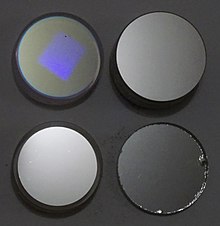


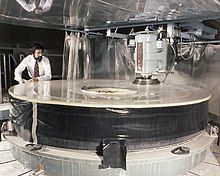



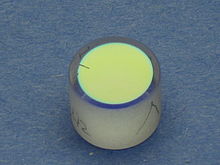




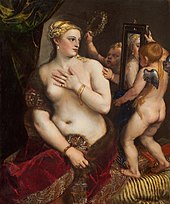

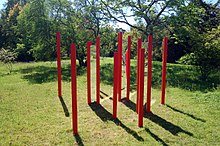

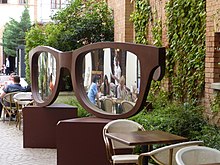

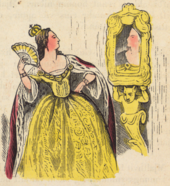

No comments:
Post a Comment